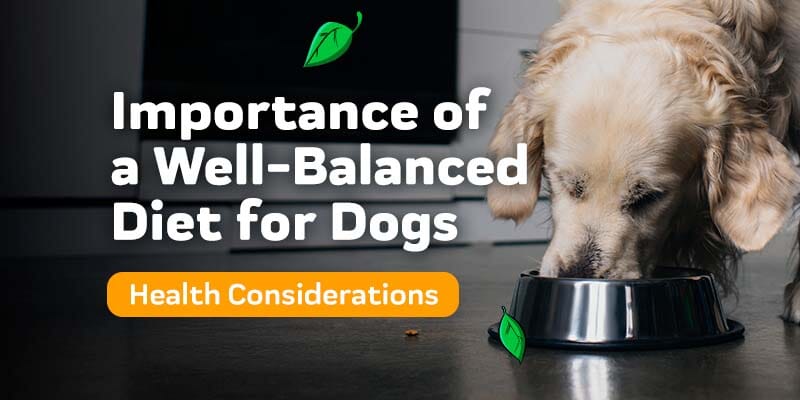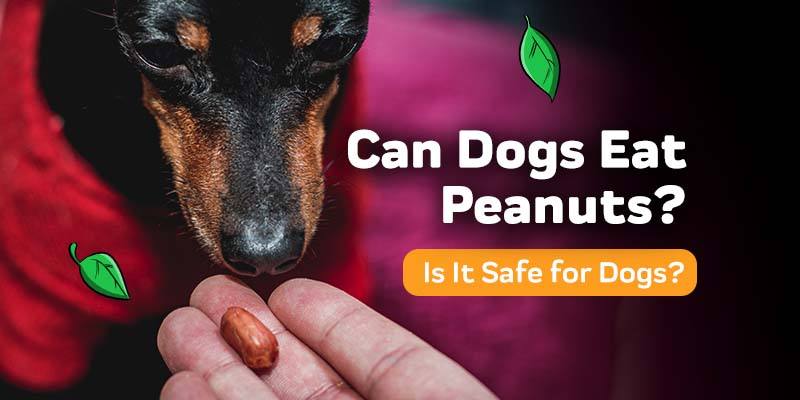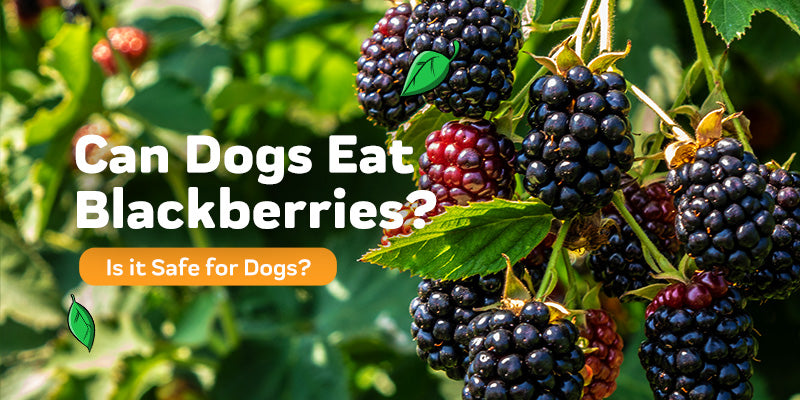
Dog owners come from different backgrounds and it is likely that opinions about the world differ from one dog owner to the next, but one thing that every dog parent can agree upon is that their puppy pal deserves nothing but the absolute best! From daily walks and playtime to belly rubs and constant love, dogs are worthy of attention and affection. But when it comes to caring for a feline, there are many aspects of raising a dog that is not quite so fun.
Some of these necessary evils are vet appointments, medication, supplements, and diet adjustments. These topics of discussion are not as much fun as tug-of-war or playing fetch, but your dog will benefit immensely if you implement the information here into your dog's daily lifestyle. Today, we are going to talk about the importance of dog fiber in your dog's daily nutrition. Fiber is often viewed as a supplement, which it is, but people sometimes take the term supplement to mean that it is supplemental.
While this is true, dog fiber itself is not a supplement all on its own. Dogs actually need a certain amount of fiber in their diet in order to maintain a healthy composition and fuel their bodies, just like humans do. If your dogs aren't receiving enough fiber from the foods they are consuming, then fiber supplements are important. But before we suggest that you purchase supplements, let's talk more about fiber as a whole and figure out if your dog consumes enough of it on the daily!
Fiber 101: What is it and How Does it Affect Your Dog?
Dietary fiber is a plant-based substance that canine digestive tracts cannot breakdown and use for energy. Instead, dog fiber is a catalyst of sorts and it helps carry out many other processes in your dog’s body. Fiber is quite a powerful tool because it has the ability to alter how chemicals are absorbed, as well as change the metabolic rates of certain nutrients and influence the way the gastrointestinal tract behaves.
Fiber plays a key role in two different processes within your dog’s body. The most common reason that dogs require a higher fiber for dogs’ intake is that their digestive tract is imbalanced in some way. Fiber helps regulate the inner workings of the canine digestive system. Foods that are rich in fiber help to keep everything moving, so dog fiber is incredibly important when it comes to bowel movements as well.
The Two Types of Fiber
Not all dietary fiber is created equal, and that becomes obvious when looking at the way fiber is used in the body. There are two types of fiber for dogs.
Soluble Fiber
As you might have picked up on, fiber is categorized based on its solubility. Soluble fiber attracts water, whereas insoluble dog fiber repels water. Now, think about these relationships with water, and consider how they affect the way the body processes food and digests nutrients. If soluble food enters the gut, it will slow down the rate of digestion. In doing so, the body emits gasses.
In the digestive tract, soluble dog fiber becomes a gel-like substance. The transformation of soluble fiber into this state is the reason why soluble fiber is responsible for the slowing of digestion. Soluble fiber is excellent for dogs that cannot seem to hold onto weight as well as others.
If your dog seems to be losing weight more rapidly than usual, or your pup has difficulty gaining weight in the first place, supplementing your canine companion's current dietary intake with sources of soluble fiber will help the issue at hand. Some foods that are high in soluble fibers include beans, peas, barley, lentils, nuts, and various other leafy green vegetables.
Insoluble Fiber
Basically, insoluble fiber cannot be dissolved or broken down in any capacity by your dog's gut. As a result, insoluble fiber essentially just adds to the contents of your dog's stomach and digestive tract. Rather than being absorbed by your canine's bloodstream, insoluble dog fiber promotes consistent bowel movements and combats any possibility that your dog's digestive tract will become backed up, which results in constipation.
If you are concerned that your dog is not experiencing regular bowel movements, the problem might be a lack of or too little insoluble fiber in his or her diet. Consider increasing the amount of insoluble fiber that your dog consumes in order to alleviate constipation in your pup. Too much fiber of any kind can cause your dog to have an unfortunate case of diarrhea, as well as a heightened potential for other negative side effects.
The number one tip when it comes to introducing fiber into your dog's diet is to make sure you view it as a process. Look at the situation as though you are working your dog up to a certain amount of fiber rather than going from their current intake to the specific goal. If you take it slow, your dog's body will acclimate to the new levels of fiber that are being introduced, whereas trying to do it all at once will confuse the body and result in negative ways.
Why High Fiber Dog Food is Beneficial for Canines
 As we have already covered, fiber for dogs is essential for regular bowel movements and the health of your dog's gut. But the digestive tract is not the only part of your dog's body that fiber impacts in a beneficial way.
As we have already covered, fiber for dogs is essential for regular bowel movements and the health of your dog's gut. But the digestive tract is not the only part of your dog's body that fiber impacts in a beneficial way.
Cholesterol is another aspect that fiber affects. In particular, soluble dog fiber helps to lower potentially higher or hazardous blood pressure levels in dogs.
Fiber is an essential part of a healthy diet, and when consumed in appropriate amounts, dietary fibers can really benefit the overall process of intaking food and using it for energy. For humans and animals, maintaining a certain level of fiber on a daily basis makes for a well-rounded nutritional balance. After all, nutrition is all about balance. So making sure your dog receives the right amount of dog fiber for his or her species, age, and gender is essential in upkeeping your dog's health and wellness.
Diets rich in fiber have also been proven to lower blood pressure, minimize any and all inflammation, balancing out the ratio of blood to sugar in your dog's body, reduces the risk of cardiovascular disease, lessens the probability that your dog will be diagnosed with cancer in the future, and helps to keep your dog at maintenance-level regarding their weight.
Holding onto Necessary Weight
If your dog is not at a healthy weight, it either means that your canine companion is underweight or obese. The overall dietary intake for your dog plays a key role in how much a dog weighs. Emaciation is not always the result of a dog who is being neglected or mistreated. Some very frail dogs are incapable of holding onto weight naturally, and this is a result of the dog not receiving adequate levels of fiber from his or her diet.
Dogs that are underweight can be tricky because this can be a result of both undereating with the right amount of fiber or overeating with too much fiber in their diets. Lowering the fiber for dogs levels in underweight dogs and increasing the fiber intake of overweight dogs usually helps fix the problem, but it might take some fine-tuning and attention to detail before you figure out the perfect fiber balance for your dog. The easiest fix is to slowly but surely start feeding more fiber to your dog.
Improvements in the Functioning of Your Dog's Colon
On the topic of improving the life of your dog, fiber also promotes a healthy colon and acts as a middle-man throughout the process of creating more fatty acids in your dog's system. See, when fiber makes its way to your dog's colon, the naturally-occurring bacteria particles in your pup's intestine will come to life and actively transform fiber into fatty acids by way of fermentation.
Unnecessary and useless bacteria that are growing too rapidly end up being inhibited by the fatty acids that result from dietary fibers, and if your dog's colon is suffering in any way, fiber helps to heal the wound as well.
Fiber Reduces Rates of Diabetes in Dogs
Yet another added bonus of fiber for dogs is that it lowers the possibility of your dog being diagnosed with diabetes. Blood sugar levels stay minimal when your dog eats a diet rich in fibrous foods. You might be wondering why blood sugar levels are important or how they are even relevant in a discussion surrounding fiber for dogs, so let us explain.
We'll talk as though we are advising people, but know that these facts hold true for dogs as well. Anytime you eat food, you subsequently cause a spike in your blood sugar levels. This happens because food has entered the body, and no matter the makeup of what you have consumed, it inherently causes an impact in your body. Blood sugar levels rise because the caloric concentration of food gives energy to the body, and while the body figures out where to use it as fuel or store it as fat, it affects the blood sugar levels of your bloodstream.
If your dog has diabetes, he or she is already well-adjusted to blood sugar levels spiking throughout the day. However, increasing the dog fiber consumption for your diabetic dog keeps sudden spikes in blood sugar levels at bay because fiber for dogs helps regulate digestion. When the digestive process takes longer to complete, there are fewer spikes in blood sugar levels, meaning that fiber helps lower the insulin spikes that dogs experience.
Where Can Dogs Get Their Daily Fiber Intake From?
Fiber intake can usually come directly from your dog’s diet. However, this is only true if your dog’s diet is rich in fibrous foods. If you are concerned about your dog’s fiber intake, you can think about switching to a high fiber dog food brand to supplement what your pet is lacking.
If you’d rather not change the brand of dog food that you feed your pup, you can also supplement their intake with fiber supplements or start giving them various fibrous foods alongside their current fiber dog food.
Here are a few ideas of high fiber foods for dogs:
Pumpkin
Pumpkins are a vegetable that takes your fiber for dogs intake to a whole other level. Not only does pumpkin have an impressive protein percentage, but it also contains vitamins like vitamin A, vitamin E, and vitamin C. Pumpkin is sometimes recognized as a godsend for dogs with diarrhea as a result of low dog fiber intake. Pumpkin can be served as is and on its own, or pumpkin can be scooped into your dog's usual food bowl, and your pup can enjoy pumpkin-flavored dry dog food! Be advised that Pumpkin Pie filling does not count, it has a large amount of added sugars.
Sweet Potatoes
Sweet potatoes have more dog fiber than you might assume, and even better, dogs are able to consume sweet potatoes at their leisure so potential canine allergies are not to be expected when feeding your dog a sweet potato as a treat. With roughly three grams of fiber per average-sized sweet potato, these in-ground vegetables can improve your dog's digestive tract without negatively affecting your pup's taste buds.
It is less likely that your dog will enjoy the tough skin of sweet potato, but all you have to do is carve out the inside and compost the skin of the sweet potato. The best part about this quick fix for a hungry dog that is low in fiber consumption is that you can prepare this simple, healthy, and all-natural snack within minutes using a microwave.
After sticking a sweet potato in the microwave, be sure to give it a few moments to cool down because otherwise, you run the risk of your dog's tongue burning from the heat. Mixing sweet potatoes into your dog's food bowl is an underrated yet incredibly efficient way of increasing your dog's fiber consumption.
Other high fiber dog foods include:
Going from Low Fiber to High Fiber Diets for Dogs
Too much fiber has a negative effect on the digestive system of animals and humans alike. Excessive consumption of fiber can lead to bloating because fiber increases the production of gas in your dog's body. Fiber for dogs has an almost immediate effect on the bowel movements of your dog. When you start to feed more fibrous foods to your pup, make sure you do so very slowly. It is better to incrementally build your way up to a certain fiber level rather than jumping from a lower fiber intake to a much higher one.
Not all pets require this transitional period, but it is better to be safe than it is to cause your dog's digestive system to flare up and become irritated. If your pet is not accustomed to a certain level of fiber in their body, then it might take some time for their internal organs to process what is going on and adjust to the new normal.
While some dogs experience more bowel movements, other dogs end up on the other extreme of the spectrum and start to experience issues related to constipation. If your dog is showing signs of constipation, it is a sign that they are not drinking enough water to account for their fiber intake. To prevent stomach aches and nausea in dogs, increase your dog's water intake as you increase their fiber consumption. Water helps the process unfold more smoothly.
Three Dietary Options that Increase Canine Fiber Consumption
 These dietary lifestyles are worth looking into: Certain diets tend to become popularized by the media every now and again. The most recent fad has been the keto diet where people consume more fats than carbohydrates.
These dietary lifestyles are worth looking into: Certain diets tend to become popularized by the media every now and again. The most recent fad has been the keto diet where people consume more fats than carbohydrates.
This works for some people, but for others, it just makes them more hungry and more tired. It might take some tweaking and adjusting if you think your dog has sensitivities to certain foods.
- Grain-free diets
- Low protein diets
- Reduced-fat diets
As you can see, each dietary suggestion places a restriction on one of the three major macronutrients. However, fiber is not reduced or increased in tandem. The goal is to see how fiber interacts with macronutrients in your dog’s body. The idea is to monitor how your dog feels with fewer carbs first, and then if nothing seems to improve, the next step is to monitor what your dog feels like when they consume less protein. Finally, if fewer carbs and less protein were not the solutions, see how your pup handles a diet with less fat.
Do not restrict your dog of all three macronutrients at once, for that would leave them in a serious deficit of key ingredients they need in order to properly function. Finding what works for your dog is a trial-and-error ordeal, but always make sure your dog’s health is the main focus. You don’t want to damage their digestive tracts or cause the initial problem to become exacerbated furthermore. High fiber dog food works best when your dog’s digestion is already on point.
Why CBD is a Great Addition to a High Fiber Diet
CBD, or cannabidiol, is an excellent hemp supplement to pair alongside fiber for dogs. Let’s say you pick up a packet of fiber treats for dogs. You can also head on over to Innovet and purchase a bag of CBD dog treats as well. Give your dog one of each at a time, and watch as they feel physically and mentally better. Cannabidiol is an excellent addition to your dog’s diet when higher levels of fiber are being introduced because fiber can sometimes upset your puppy's stomach at first. Check out Innovet today for other CBD options that pair well with high fiber dog foods!
Sources:
Health benefits of dietary fiber
Influence of fiber fermentability on nutrient digestion in the dog
Alternative Dietary Fiber Sources in Companion Animal Nutrition
Approved by:
Dr. Sara Ochoa
Doctor of Veterinary Medicine, St. Georges University

Thanks for stopping by!
P.S. We Love You!
Sincerely,
The Innovet Team
Please do not ask for emergency or specific medical questions about your pets in the comments. Innovet Pet Products is unable to provide you with specific medical advice or counseling. A detailed physical exam, patient history, and an established veterinarian are required to provide specific medical advice. If you are worried that your pet requires emergency attention or if you have specific medical questions related to your pet’s current or chronic health conditions, please contact or visit your local/preferred veterinarian, an animal-specific poison control hotline, or your local emergency veterinary care center.
Please share your experiences and stories, your opinions and feedback about this blog, or what you've learned that you'd like to share with others.
















